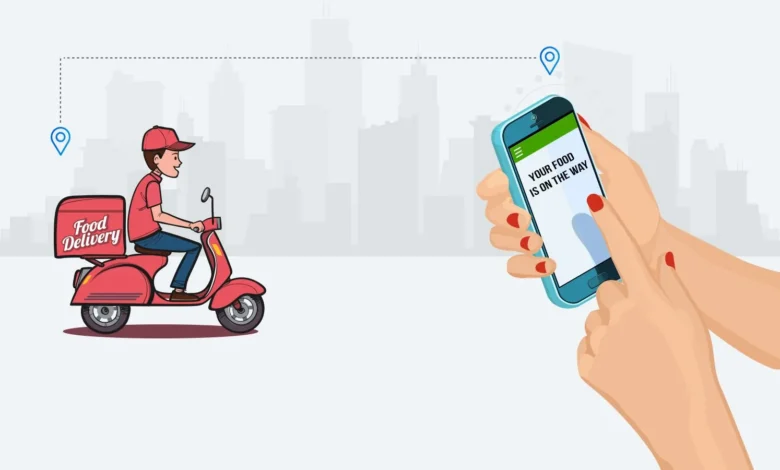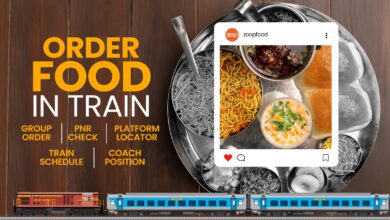From Farm to Fork and App: How Food Delivery Apps are Changing the Industry

Introduction
The food delivery industry has witnessed a dramatic transformation over the past decade, driven by technological advancements and changing consumer behaviors. The rise of food delivery apps has revolutionized the way we access food, offering unprecedented convenience and variety. These apps have not only reshaped consumer expectations but also brought significant changes to the food industry itself. This comprehensive article explores the impact of food delivery apps, the role of food delivery app development companies, and the future of this dynamic industry.
History of Food Delivery
Food delivery is not a new concept. Traditional methods of food delivery have existed for centuries, ranging from ancient Roman wine deliveries to the iconic pizza deliveries of the mid-20th century. However, the process has evolved significantly over time. In the late 20th century, telephone orders and delivery services began to gain popularity. The advent of the internet and mobile technology in the 21st century paved the way for the modern food delivery ecosystem we know today.
The Emergence of Food Delivery Apps
The first wave of food delivery apps emerged in the early 2010s, capitalizing on the widespread use of smartphones and mobile internet. Companies like Grubhub, Uber Eats, and DoorDash quickly gained traction by offering a seamless and user-friendly way for consumers to order food from a variety of restaurants. Technological advancements such as GPS tracking, secure payment gateways, and push notifications have further enhanced the user experience, making food delivery apps an integral part of daily life.
Impact on the Food Industry
The introduction of food delivery apps has had profound effects on the food industry. Restaurants, both large and small, have had to adapt to this new mode of operation. For many small businesses, food delivery apps provide a platform to reach a broader audience without the need for significant marketing investments. Larger chains, on the other hand, use these apps to streamline their delivery services and maintain a competitive edge. The result is a more dynamic and interconnected food ecosystem that benefits both consumers and businesses.
Technological Specifications of Food Delivery Apps
Developing a successful food delivery app involves integrating several critical features. These include an intuitive user interface, real-time GPS tracking, secure payment processing, and robust customer support. Advanced technologies such as artificial intelligence (AI) and machine learning are also employed to optimize delivery routes, predict customer preferences, and enhance overall efficiency. Ensuring the security of user data and payment information is paramount, requiring state-of-the-art encryption and secure servers.
Development Process of Food Delivery Apps
The development of a food delivery app begins with thorough planning and research to understand market needs and consumer preferences. This is followed by the design phase, where user experience (UX) and user interface (UI) designs are created to ensure the app is intuitive and engaging. The development phase involves coding and integrating various functionalities, followed by rigorous testing to identify and fix any issues. Finally, the app is launched and continuously updated based on user feedback and technological advancements.
Key Players in the Food Delivery App Market
The food delivery app market is dominated by several key players, each offering unique features and services. Companies like Grubhub, Uber Eats, DoorDash, and Postmates are well-known for their extensive restaurant networks and reliable delivery services. These companies compete fiercely for market share, constantly innovating to attract and retain users. The competition among these giants drives the overall growth and improvement of the industry.
Applications of Food Delivery Apps
Food delivery apps have a wide range of applications, benefiting various stakeholders in the food industry. For consumers, these apps provide convenience, allowing them to order food from their favorite restaurants with just a few taps. Restaurants benefit from increased visibility and the ability to reach a broader customer base. Delivery personnel, often independent contractors, have flexible job opportunities with the potential for substantial earnings.
Benefits of Food Delivery Apps
The benefits of food delivery apps are manifold. For consumers, these apps offer unmatched convenience, allowing them to save time and effort. The wide variety of available cuisines and restaurants ensures that there is something for everyone. For restaurants, food delivery apps provide a valuable revenue stream and help increase brand visibility. Additionally, the data collected by these apps can offer insights into customer preferences and behavior, enabling more targeted marketing and operational efficiency.
Challenges and Limitations
Despite their many advantages, food delivery apps also face significant challenges. The high level of competition in the market means that companies must continuously innovate to stay ahead. Delivery logistics can be complex, especially during peak times or adverse weather conditions. Ensuring high-quality customer service is another challenge, as any issues with orders or delivery can negatively impact user satisfaction and brand reputation.
Latest Innovations in Food Delivery Apps
The food delivery app industry is constantly evolving, with new innovations emerging regularly. One notable trend is the integration of apps with smart home devices, allowing users to place orders using voice commands through devices like Amazon Alexa or Google Home. The use of drones and robots for delivery is also being explored, promising faster and more efficient service. Real-time tracking and updates have become standard features, providing users with greater transparency and control over their orders.
Future Prospects of Food Delivery Apps
The future of food delivery apps looks promising, with several trends shaping the industry’s trajectory. The use of AI and machine learning to predict customer preferences and optimize delivery routes is expected to become more prevalent. Additionally, the integration of blockchain technology could enhance transparency and security in transactions. As consumers increasingly seek convenience and quick service, the demand for food delivery apps is likely to continue growing.
Comparative Analysis with Traditional Methods
When compared to traditional food delivery methods, modern food delivery apps offer several advantages. They provide greater speed and efficiency, with real-time tracking and shorter delivery times. The cost-effectiveness of these apps, due to streamlined operations and economies of scale, also stands out. Moreover, the ease of use and the wide range of options available through these apps surpass the capabilities of traditional methods.
User Guides and Tutorials
For users new to food delivery apps, a few tips can enhance their experience. First, exploring the various features and settings can help tailor the app to individual preferences. Utilizing search filters and reading reviews can assist in making informed choices. For restaurants, optimizing their menu for online orders, offering promotions, and engaging with customers through the app can drive success.
Case Studies
Success stories abound in the food delivery app industry. Many restaurants have reported significant growth in sales and customer base after partnering with popular food delivery apps. Consumer experiences also highlight the convenience and satisfaction these apps provide. For instance, busy professionals and families often rely on food delivery apps to save time and enjoy a variety of meals without the hassle of cooking.
Impact on Consumer Behavior
The advent of food delivery apps has fundamentally changed consumer behavior. There is a noticeable shift towards dining in, with consumers valuing the convenience and time-saving aspects of food delivery. This increased demand for convenience has led to higher expectations for service quality and speed, pushing the industry to innovate continually.
Food Delivery App Development Companies
The role of food delivery app development companies is crucial in this ecosystem. These companies are responsible for creating sophisticated platforms that enable seamless food ordering and delivery. Leading development companies, such as Zomato, Swiggy, and Just Eat, have set high standards in terms of app functionality, user experience, and security.
How to Choose a Food Delivery App Development Company
Selecting the right food delivery app development company involves several considerations. It’s important to evaluate their experience and expertise in developing similar apps. Reviewing their portfolio and client testimonials can provide insights into their capabilities. Comparing different companies based on their technical skills, innovation, and support services can help make an informed decision.
Cost of Developing a Food Delivery App
Developing a food delivery app involves various costs, including research, design, development, and marketing. The total cost can vary significantly depending on the complexity of the app, the features included, and the geographic location of the development team. It’s crucial to plan and budget carefully, considering all factors that can influence the overall cost.
Regulations and Compliance
Operating a food delivery app requires adherence to various regulations and compliance standards. These include health and safety regulations to ensure food quality and hygiene. Legal considerations such as business licenses, delivery permits, and data protection laws must also be addressed to avoid legal issues and ensure smooth operations.
Marketing Strategies for Food Delivery Apps
Effective marketing is essential for the success of food delivery apps. Leveraging social media and influencer marketing can help reach a broader audience and build brand awareness. Offering promotions and discounts can attract new users and retain existing ones. Engaging content and targeted advertisements can also drive user engagement and increase app downloads.
SEO for Food Delivery Apps
SEO plays a crucial role in the visibility and success of food delivery apps. Implementing best practices such as keyword optimization, high-quality content, and proper use of headings can improve search engine rankings. Local SEO is particularly important for food delivery apps, as it helps attract users in specific geographic areas.
User Experience and Interface Design
A user-friendly interface is vital for the success of a food delivery app. Key design principles include simplicity, intuitive navigation, and visual appeal. Ensuring that the app is easy to use and visually engaging can enhance user satisfaction and encourage repeat usage. Regular updates and improvements based on user feedback are also essential.
Food Delivery Apps During COVID-19
The COVID-19 pandemic led to a surge in demand for food delivery apps as lockdowns and social distancing measures restricted dining out. Many restaurants adapted by partnering with delivery apps to continue serving customers. The pandemic also highlighted the importance of hygiene and contactless delivery options, leading to innovations in delivery processes and safety protocols.
Sustainability in Food Delivery
Sustainability is becoming increasingly important in the food delivery industry. Eco-friendly practices such as using biodegradable packaging, optimizing delivery routes to reduce carbon emissions, and promoting plant-based menu options are gaining traction. Consumers are also more conscious of environmental impact, making sustainability a key consideration for food delivery apps.
Consumer Privacy and Data Security
Ensuring consumer privacy and data security is paramount for food delivery apps. Implementing robust security measures, such as encryption and secure payment gateways, helps protect user data. Compliance with data protection regulations, such as GDPR, is also crucial to avoid legal issues and maintain user trust.
Integration with Other Technologies
The integration of food delivery apps with other technologies, such as the Internet of Things (IoT) and AI, is enhancing their functionality and efficiency. IoT devices can facilitate seamless order placements, while AI can predict customer preferences and optimize delivery routes. Such integrations improve the overall user experience and operational efficiency.
Role of Reviews and Ratings
Reviews and ratings play a significant role in influencing consumer choices on food delivery apps. Positive reviews can attract new users, while negative reviews can deter potential customers. Strategies for managing reviews include responding promptly to feedback, addressing issues, and encouraging satisfied customers to leave positive reviews.
Personalization in Food Delivery Apps
Personalization is a key trend in the food delivery app industry. By analyzing user data, apps can offer customized recommendations and promotions tailored to individual preferences. Personalization enhances the user experience, making the app more engaging and increasing user loyalty.
Conclusion
The food delivery app industry has transformed the way we access and enjoy food. From enhancing convenience for consumers to providing new opportunities for restaurants and delivery personnel, these apps have had a profound impact on the food industry. As technology continues to evolve, the future of food delivery apps looks promising, with new innovations and trends shaping the industry’s trajectory. Embracing these changes and addressing the challenges will ensure that food delivery apps remain a vital part of our daily lives.



